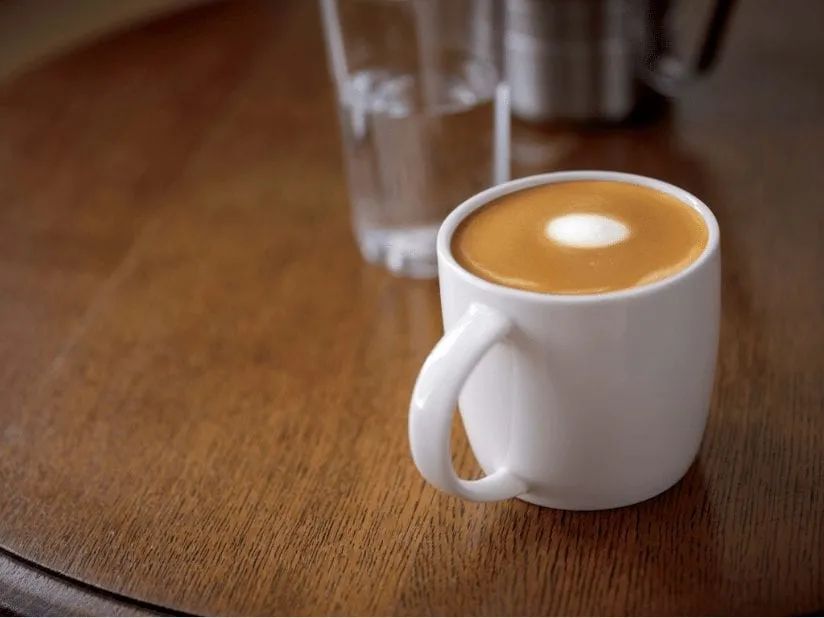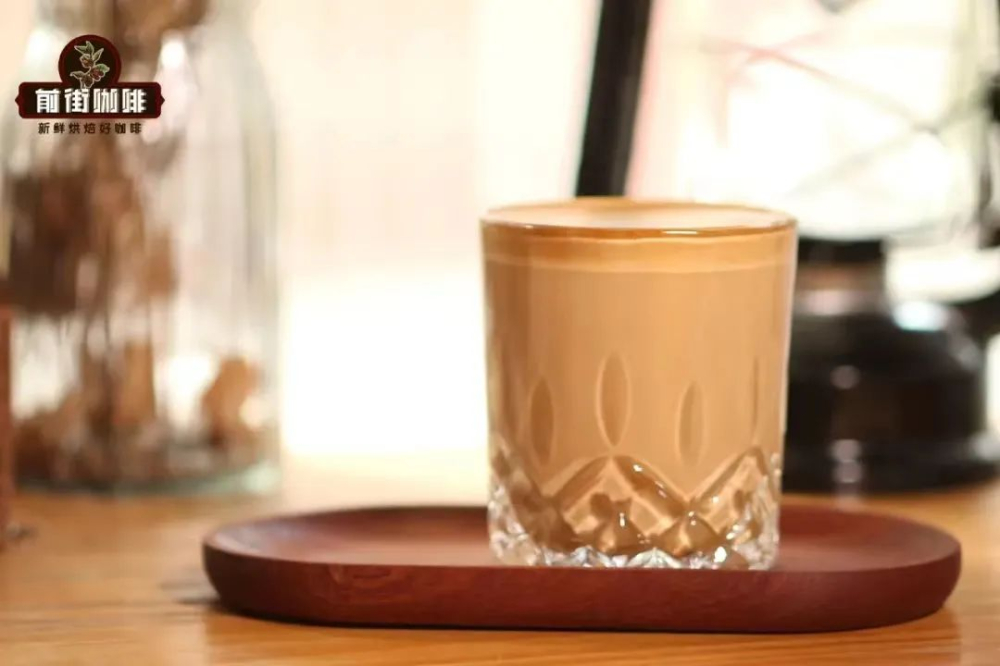Introduction to the story of the origin of the proportion of Australian white coffee making: the difference between flat white fragrant white and latte coffee
Recently, a friend asked Qianjie, "how much espresso and how much milk do you need to make Australian white coffee?"
Italians are really good at fancy coffee. What else can't be done if they can pour espresso into ice cream to form a new product? Yes, changing the ratio of coffee to milk can also create a new product, yes, it is Flat White Australian white coffee.

If you have friends, you will wonder, isn't Australia White invented by the people of Australia (or New Zealand)? Don't worry, the story goes something like this. Early Australia and New Zealand were colonized by some British and Irish. Some of them have the habit of drinking coffee, so they also bring the coffee culture to the local area. Unlike coffee in today's cafes, they drink family-style coffee with no tedious names, only simple Black coffee and White coffee. Black coffee is the black coffee filtered from the brewed coffee. White coffe is black coffee with milk, and the color of coffee beans changes from black to milky white, that is, white coffee. After World War II, Europe was smashed (physically), Italy was out of work, and a large number of Italians went to Latin America and Australia to seek a living. Most of those who go to Latin America and Australia come from North Italy (the level of industrialization and urbanization in North Italy is high, and agriculture in South Italy is developed). They also bring Italian coffee to the region.

Any special product must be localized after entering the local market, otherwise it will be very difficult to survive. This can be verified in the United States. When Italians come to American open-style cafes, they copy the Italian style from the very beginning. As a result, Americans do not accept such strong coffee at all, so the "American coffee" in espresso appears. At the same time, even American Italian lattes will have a larger ratio of concentrated to milk, making the coffee less strong. Back in Australia, Italian cafes were also taught by the market to understand what kind of latte Australians need. They need a stronger coffee, and do not want to finish the mouth full of foam (easy to die) latte. The solution is also very simple, there is less milk, less foam bar, of course, after the change needs a new name, so that others will think that this is a different product. Because the milk foam becomes thinner, it can not do the traditional 11 points full, the most full can only be flush with the mouth of the cup, so it is called "Flat White". Flat means "flat", and White refers to white coffee with milk.

Later, the second generation of Italian born and raised, with the development of the times, the Flat White is more distinctive than other milk cafes. For example, many coffee shops will have more than two types of Italian coffee beans, in the production of classic Italian latte, cappuccino will choose Italian combination, while the production of Flat white uses single-origin beans or beans different from the traditional Italian flavor to highlight the coffee flavor characteristics of Flat White. In the extraction concentrated substrate, some coffee shops are not limited to the standard extraction method of espresso. Use a more intense extraction, that is, only take the middle and front part of espresso, which is called ristretto, because as long as the middle and front part of espresso is rich, but the amount is less, and it is difficult to highlight the coffee flavor after mixing milk, the solution is also very rough, that is, one portion is not enough, that is, two portions, so that the amount of double ristretto is about the same as espresso. I would like to emphasize here that Flat White coffee does not have to use double ristretto as the base, and some coffee shops choose esoresso, which is also judged by the final taste. However, later, people were eager to distinguish lattes from Flat White, so many people used different concentrated substrates as one of the distinguishing points.

Therefore, one of the commonly used Flat White production parameters is that the weight of double ristretto is about 30g, and then the proportion of milk added is 1:5, that is, 150ml milk, the foam is as thin as possible. Use a cup with a capacity of 200ml so that the espresso with milk and the mixture of foam and coffee fat is exactly the same as the 200ml cup. My friend said, "I just want to know the ratio of coffee to milk, but you told me a story!"
Important Notice :
前街咖啡 FrontStreet Coffee has moved to new addredd:
FrontStreet Coffee Address: 315,Donghua East Road,GuangZhou
Tel:020 38364473
- Prev

Why is freeze-dried coffee so popular? What is the difference between instant coffee and freeze-dried coffee?
Earlier days, the word freeze-dried coffee powder was very hot. In the store, many guests could also be heard discussing it. Many guests drank hand-brewed coffee while buying popular freeze-dried coffee on the other side. And what do they mean by freeze-dried coffee? The front street will share this knowledge. its
- Next

Philharmonic pressure Aeropress brewing method production process which product is better, Philharmonic pressure or hand flushing?
You never know what a brilliant experience a retired old man has had before, or that he will be able to make a difference in another industry after retirement. Just like this AlanAdler (Alan Adler) old gentleman. AlanAdler was born in Detroit in May 1938.
Related
- Beginners will see the "Coffee pull flower" guide!
- What is the difference between ice blog purified milk and ordinary milk coffee?
- Why is the Philippines the largest producer of crops in Liberia?
- For coffee extraction, should the fine powder be retained?
- How does extracted espresso fill pressed powder? How much strength does it take to press the powder?
- How to make jasmine cold extract coffee? Is the jasmine + latte good?
- Will this little toy really make the coffee taste better? How does Lily Drip affect coffee extraction?
- Will the action of slapping the filter cup also affect coffee extraction?
- What's the difference between powder-to-water ratio and powder-to-liquid ratio?
- What is the Ethiopian local species? What does it have to do with Heirloom native species?

